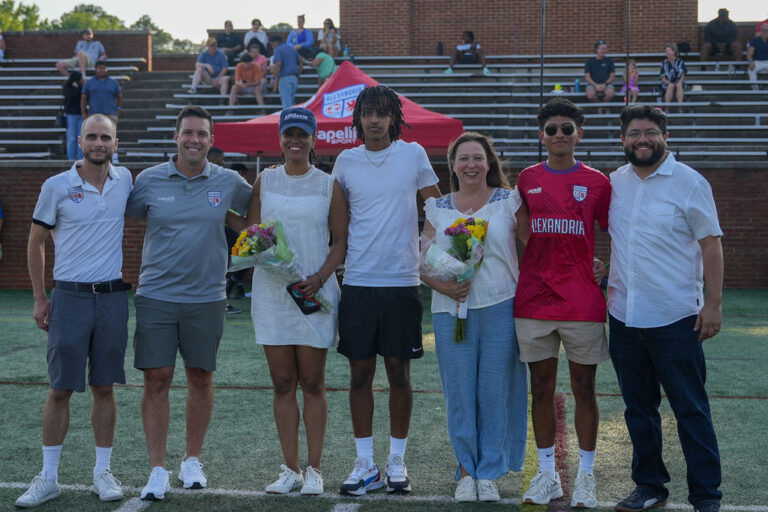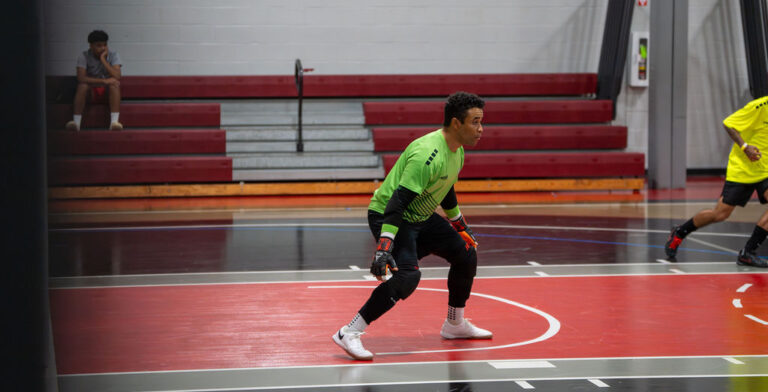by Jennifer Schwartz, Alexandria Soccer Injury Prevention & Fitness
Most soccer parents are familiar with the fact that soccer can create a variety of knee issues. In fact, a longitudinal study identified High School girls soccer as the sport with the second highest rate of knee injury behind football (Sports Med 2014). Of the 186,000 soccer injuries reported in 2006, 80% were under the age of 24 and 44% of those were in kids younger than 15(Journal of American Pediatrics 2010). Girls are 4x more likely to have an ligament (ACL) rupture when compared to their male counterpart (Read more about ACL tears). The technical staff and coaches receive a lot of questions and concerns about knee injuries. We hear you! Your concerns are valid and I know from my personal knee injuries and professional experience that this is something we must address for young soccer players.
The policies and practices that we have established are designed to stop injuries before they happen. This result will come from teamwork and collaboration with the players, injury prevention and fitness director (myself), parents and coaches.

Why is this important?
There are multiple knee injuries that soccer players can have but Anterior Cruciate Ligament (ACL) and medial meniscus injuries are the most common. The ACL is a piece of anatomy that I have a lot of experience with. As a young soccer player, I tore my ACL at 15. This repaired ligament was torn a second time in my twenties. In both of these incidents I was over confident and not aware of the risks I was taking while competing in sports with dangerous exposure to knee injury.
Once the ACL tears (visualize a rope torn apart dangling by threads) reconstructive surgery is most likely needed. Knee reconstruction is a serious and costly surgery. Once a ligament tears it will never be the same. This makes it very difficult for these structures to bear our weight every day. A reconstructive knee surgery means a young body will have to endure physical and emotional stress: hours of anesthesia (going ‘under’ is the closest experience the person will have to comatose), post-surgery narcotics, months of pain, rigorous therapy, hundreds of dollars in co-pays, and of course the anxiety of returning to play safely (60–70% will have a re-tear and an additional surgery).
My mission is to help your child prevent knee injuries.
The future orthopedic health of your athlete is very important. Early onset arthritis means that as a 25 year old the player will have the potential for experiencing joint pain that will hinder living an active healthy life. Can you imagine that? We want to shape a healthy future for your children, not set them up for problems.
Our philosophy is that using baseline assessments and measurements is the first and most important step in keeping our kids safe and continually improving in the ASA curriculum. Each player that participates in the baselines will be categorized into one of 3 groups after video analysis; Priority A, B, and C. We will conduct this testing once in the fall and before/after preseason training. In the fall these categories will tell us who needs extra special exercise, additional assessing, and who will most likely be at the top of their game. This also helps the coaching staff create a learning environment conducive to continuous improvement.
One thing is for certain, all injuries have a single common denominator– injuries occur when the athlete cannot absorb the forces from the contact of the ground, the ball, or another player. Our baselines are meant to measure how a player’s body absorbs force in landings, with fatigue, and in accordance with his or her own unique flexibility. The usability of this information is dependent upon cooperation, communication, and identifying clusters of injury over a season.
If I find that your child is at risk for injury based on our baseline assessments I will make a time to sit down and discuss with you what I found and what needs to be done about it so your child has a fun and injury free soccer season.




